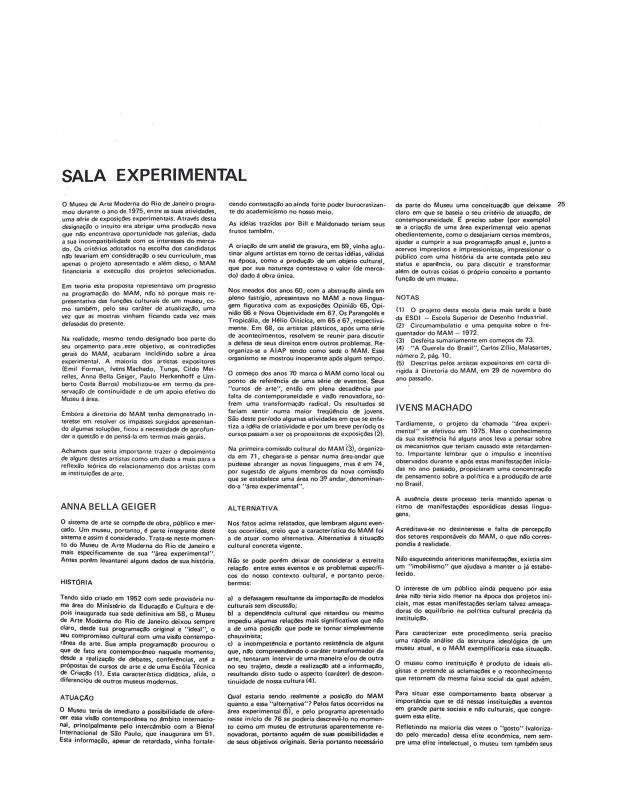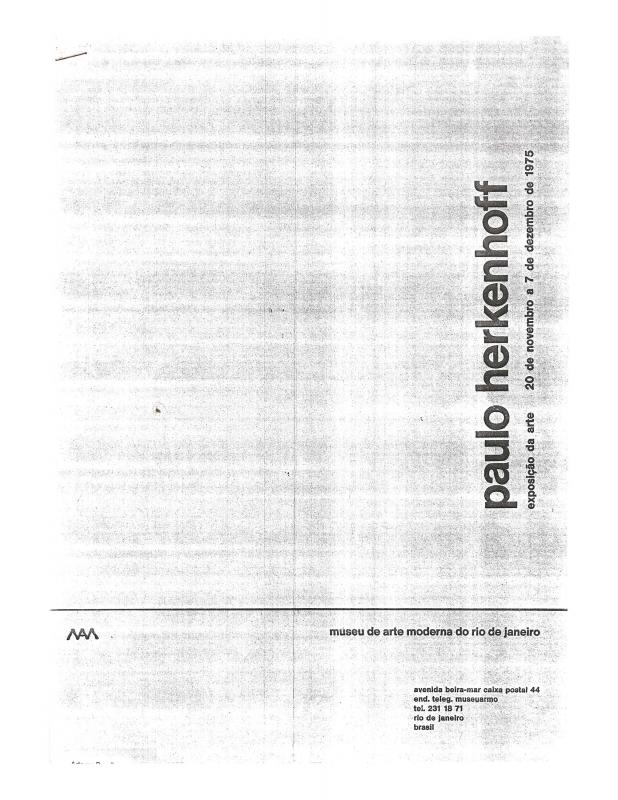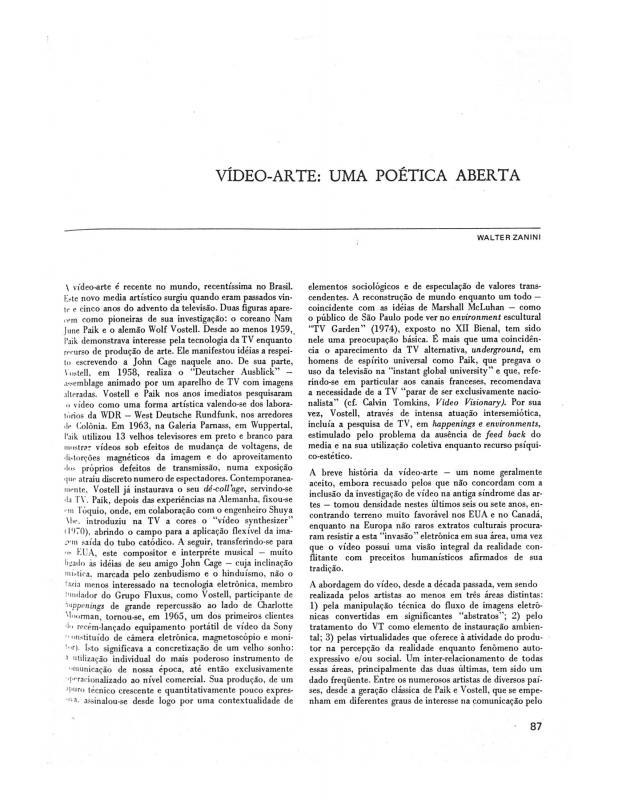In the art world of Brazil, Ivens Machado began to stand out in the 1970s with his exhibition in the Experimental Room at the Museu de Arte Moderna do Rio de Janeiro (MAM-Rio). At the same time, he became involved with a circle of artists who were working in video art. His work was always clearly marked by a persistent investigation of materials.
Milton Machado is an artist, writer, and professor. His life as an artist began in the late 1960s and early 1970s, when he participated in a few of the São Paulo Biennials as well as the Panorama da Arte Brasileira, among other national exhibitions. Organized by FUNARTE in the 1980s, the Ciclo de Escultura was held at the foundation at the Galeria Sérgio Milliet in Rio de Janeiro. The purpose of the exhibition was to “call sculpture into question, presenting, rather than its history, its possibilities in the present.” Under the supervision of the curator, Paulo Venancio Filho, the project fit perfectly into the scope of action of FUNARTE in its effort to promote contemporary art in Brazil.
To illustrate the way MAM-Rio came up with the idea of promoting artists whose work had a radical focus, there are two documents that portray this: first, a text by Ivens Machado, Anna Bella Geiger and Paulo Herkenhoff, entitled “Sala Experimental” [doc. no. 1110602]. The other text is by Herkenhoff himself describing his participation in the program in “Paulo Herkenhoff: exposição da arte” [doc. no. 1110618]. With respect to experimental art in São Paulo, as the director of Museu de Arte Contemporânea da Universidade de São Paulo (MAC-USP), Walter Zanini was the great promoter of the experiences of that 1970s generation. He fostered all kinds of innovations, starting with “Vídeo-arte: uma poética aberta” [doc. no. 1110892].



